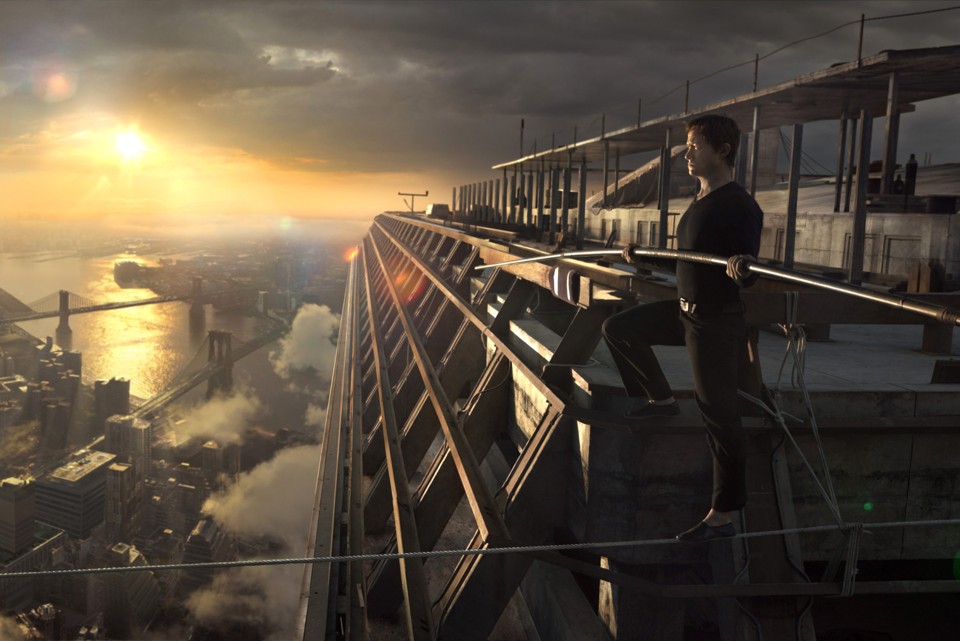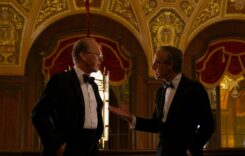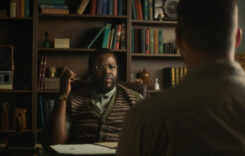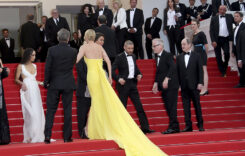OCTOBER 19, 2015
I was living in New York in 1974 when Philippe Petit made his famous walk on a wire between the two towers of the then-new World Trade Center. Among the New Yorkers I knew, the twin towers were somewhat of a joke, a waste of taxpayer money in a lame attempt to manufacture yet another New York City icon. (How wrong we turned out to be!) When word got out that this nut was risking his life (and, pre-internet, it took a little while for the word to get out), New Yorkers rushed to their TV sets to watch this madness and were enthralled. From that moment on, the twin towers became less of a joke and more of that great place where this French guy walked on a wire. In a way, Petit turned around people’s perception of what is now thought of as a beloved icon.
Petit’s story has been previously captured on film in the 2008 Oscar-winning documentary “Man on Wire,” which worked both as an historical chronicle and, surprisingly, as a caper movie. The doc was so highly regarded that, when it was announced that Petit’s feat would be turned into a fictional film, a wide consensus asked “Why bother?” And now having seen the new fictional film “The Walk,” the question is still well founded except for two important factors: Robert Zemeckis and 3D.
Despite a Best Director Oscar win for “Forrest Gump,” Zemeckis has a kind of middlebrow reputation among film critics. Yet he is one of the few American directors who has always aimed to break new ground using the latest technology at his command. In 1985, “Back to the Future” set a new bar with the quality of its special effects. “Who Framed Roger Rabbit?” (1988) — has there been a better blending of animation and live-action before or since? Ever since it won Best Picture, “Forrest Gump” has been dismissed in some quarters as the “life is like a box of chocolates” bromide, but its technical achievements at the time — of expertly inserting the Hanks character into historical film footage — was a real breakthrough and stands the test of time today. And his 2004 “The Polar Express” was hailed as a huge step forward in the technique of performance capture — animating figures based on real actor’s movements. So bringing 3D to Petit’s story seems a logical next step for this innovative director.
Zemeckis has enlisted American actor Joseph Gordon-Levitt (excellent here) to portray Petit, who himself coached the young actor in mastering his French accent and taught him how to walk the wire, which Gordon-Levitt was able to nail after only 8 days. Gordon-Levitt does have to carry much of the film, particularly the first act in France, where Petit has some success as a street performer, learns how to walk the wire with the help of coach Papa Rudy (Ben Kingsley, complete with cigarette holder) and has a meet-cute with fellow street busker Annie (Charlotte Le Bon), who travels with him to New York after he gets the idea to make a big splash with a World Trade Center walk.
Act 2 is assembling the co-conspirators in what Petit calls “the coup.” Besides Annie, there’s photographer Jean-Louis (Clément Sibomy), fear-of-heights Jeff (César Domboy), an inside man (Steve Valentine), an amateur shutterbug (Ben Schwartz), and a stoner (Benedict Samuel). None make much of an impression except for French-speaking electronics-salesman loudmouth J.P. (rising character actor James Badge Dale), who does give some oomph to the caper plans, which was surprisingly done much more effectively in “Man on Wire.”
To this point, given the just-OK dramatics so far, I had my doubts about “The Walk” turning out well. Then Petit takes his first step across the wire, and it’s pure cinematic magic in 3D. Zemeckis uses 3D in suggesting depth and height in a way that I had never quite before seen, and it’s absolutely breathtaking. Loyal readers of Exact Change Today may know that I have a great fear of heights and upon seeing the buses and taxis some 1,362 feet below, my balls landed up somewhere within the vicinity of my throat, but yet with Zemeckis at the helm, these 20 minutes represented film technology at its most magical.
Since the Petit story is so well known, there are really no spoilers in discussing the film’s ending. Petit has been narrating the film from the top of the crown of the Statue of Liberty (don’t ask), but in the film’s final shot, he turns toward the World Trade Center, now no more, but glistening that day in the glorious golden sunlight. My balls had retreated back to where they belonged, but in their place in my throat was a giant lump.
GRADE: B (C for the first 90 minutes, A for the last half-hour)












